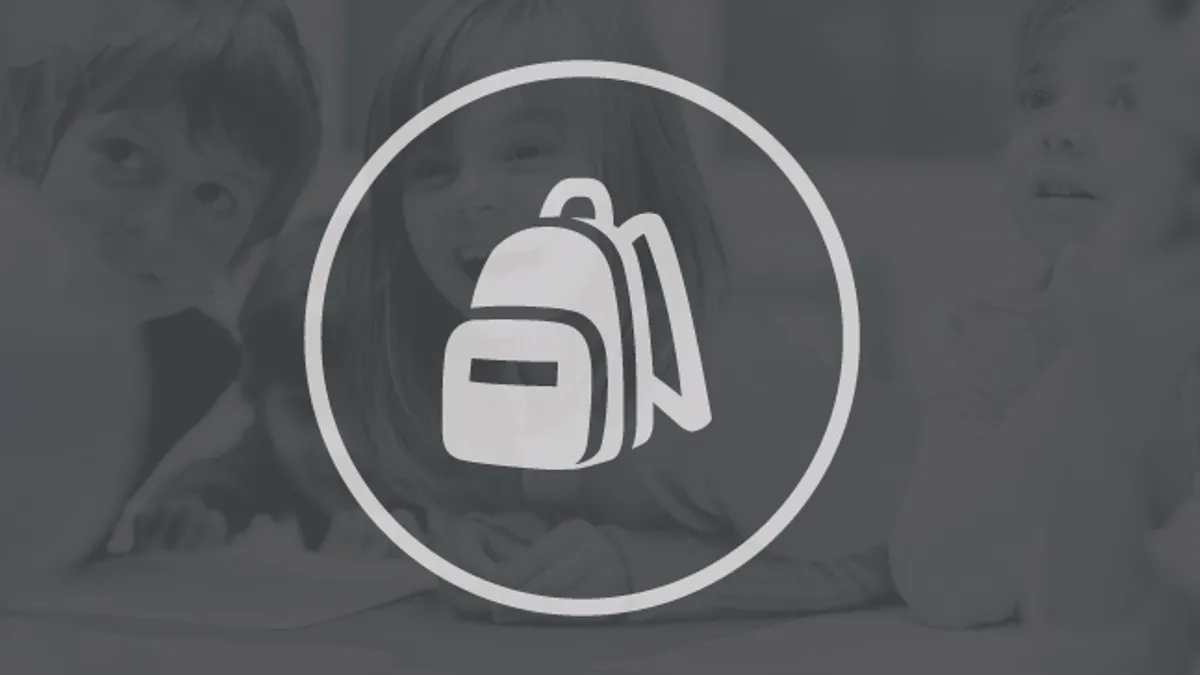This latest Pre-to-3 column focuses on a model for helping administrators support strong early learning programs. Past installments of Pre-to-3 can be found here.
After working at the middle school level for a few years, De’Monica Amerson forgot a few things about being in a building that includes pre-K.
“Why are they still crying?” she asked herself last year when she became principal at Thompson Elementary School in Houston. “I didn’t remember that it took three weeks for them to stop crying.”
This fall, she tried something different. She arranged a “principal play date” with the school’s incoming pre-K and kindergarten students. They played with Hula Hoops and shot basketballs, toured the school and visited the restrooms. There were still a few tears when school began, but by day five, she had no more criers.
Amerson received an email from a parent that said, “Thank you so much, my baby didn’t cry.”
“It built the relationship with the parent,” she said. “It built that trust.”
Amerson might not have come up with the idea for the activity if she hadn’t participated in the Early Learning Leadership Program (ELLP), an initiative of the nonprofit New Teacher Center (NTC) that focuses specifically on schools that include pre-K.
When Betsy Fox, senior director of early learning partnerships at NTC, scanned the growing array of leadership development programs focusing specifically on elementary principals, she felt there was a need for a model that covers some of the practical concerns and questions that principals might have — topics that range from why it’s important to buy blocks and Play-Doh for early-childhood classrooms to deeper issues, such as discipline practices.
After one discussion of how boys of color are more likely to be suspended and expelled in the early years, Fox said a principal asked, “Wait, are you telling me kindergartners are being sent to my office for doing what 5-and-a-half-year-olds are supposed to be doing?”
The goal of the nine-month program, featured recently in a New America report, is to give principals and other instructional leaders, such as coaches, a safe place to share what they don’t know about child development, classroom practices and executive function.
A lot of principals, Fox said, are “stressed about play” and often don’t see the connection to learning.
That’s why when the conversation comes around to making changes to the spaces in which pre-K students spend their day, Fox said principals are usually more comfortable starting with the playground. “It feels like a safe entry point,” she said.
The program includes six three-hour seminars, which focus on brain development, growth milestones and teaching practices that encourage language development and emerging math skills. But it also includes down-to-earth “walk and talks” in which the ELLP team tours a principal’s building to look at how classroom spaces and routines can be improved.
Participants discuss, for example, how a large part of a young child’s day is spent transitioning from one activity or space to another. Based on what they learned from ELLP, the Thompson Elementary team adapted the schedule to better suit pre-K students.
They created a nap room instead of having students rest in the classroom, and they plan to gradually wean students off naps as the school year progresses. Instead of working at tables, students practice writing on lap trays while sitting on the floor. Amerson said they also came away from the program with a new emphasis on students doing “authentic work” — making numbers or letters out of Play-doh, for example, rather than tracing them on paper.
Knowing ‘what to look for’
As NTC thinks about expanding the program to more districts, one challenge, Fox said, is how to ensure the people who have authority over principals are involved — not just those who work in an early learning division.
“It’s about shifting beliefs in a whole district,” she said. “You have to have supervisors of elementary principals on board.”
That’s what happened in the Long Beach Unified School District (LBUSD) in California.
As deputy superintendent of schools in LBUSD, Jill Baker focuses a lot on alignment in curriculum and instruction and between grade levels. She said that while preschool programs in the district have been rather prescriptive, children would then move into early grades with less direct instruction — and not all make a successful transition. LBUSD principals and other early learning staff members in the district participated in ELLP last year.
“We’ve made all these strides, but we still have an achievement gap,” she said. “You’ve got to intervene for students who haven’t had success.”
This fall, the district provided funds for schools to purchase new classroom materials, books and playground equipment. And now principals notice, for example, whether materials and images and messages on the wall are at students’ eye level.
“They feel now that they know what to look for, and they know how to help a kindergarten teacher,” Baker said, adding that the program has “empowered them to contribute to good practices.”
In reviewing impact data following the program, Fox said she was initially surprised to see that principals said they knew less about the early learning topics covered than when they started. But then she realized the experience was teaching them they still had a lot to learn.
The goal, she said, is not for principals to return to their schools and think they are now the experts on play, but instead to say, “Let’s explore this together.”








 Dive Awards
Dive Awards













